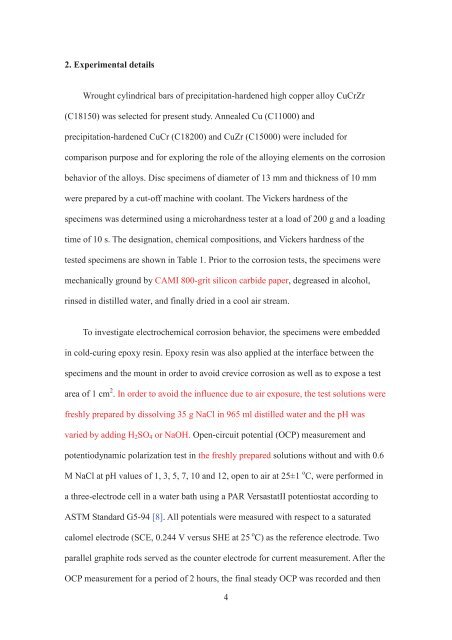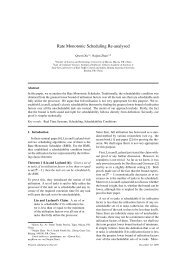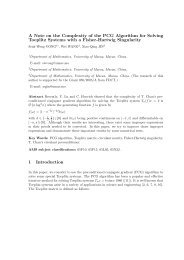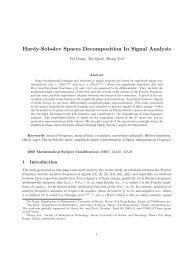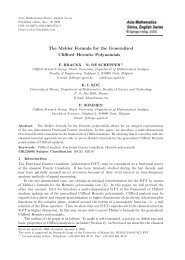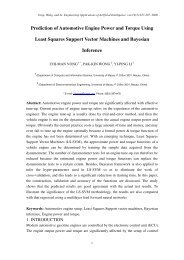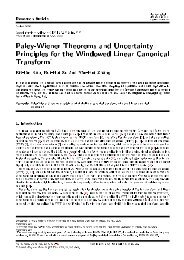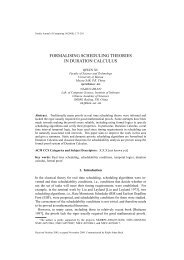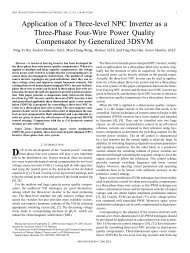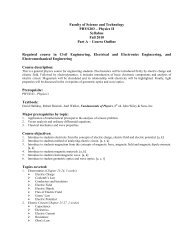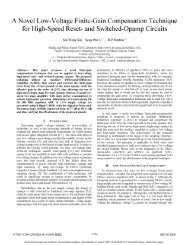Effect of pH on corrosion behavior of CuCrZr in solution without and ...
Effect of pH on corrosion behavior of CuCrZr in solution without and ...
Effect of pH on corrosion behavior of CuCrZr in solution without and ...
You also want an ePaper? Increase the reach of your titles
YUMPU automatically turns print PDFs into web optimized ePapers that Google loves.
2. Experimental details<br />
Wrought cyl<strong>in</strong>drical bars <str<strong>on</strong>g>of</str<strong>on</strong>g> precipitati<strong>on</strong>-hardened high copper alloy <strong>CuCrZr</strong><br />
(C18150) was selected for present study. Annealed Cu (C11000) <strong>and</strong><br />
precipitati<strong>on</strong>-hardened CuCr (C18200) <strong>and</strong> CuZr (C15000) were <strong>in</strong>cluded for<br />
comparis<strong>on</strong> purpose <strong>and</strong> for explor<strong>in</strong>g the role <str<strong>on</strong>g>of</str<strong>on</strong>g> the alloy<strong>in</strong>g elements <strong>on</strong> the corrosi<strong>on</strong><br />
<strong>behavior</strong> <str<strong>on</strong>g>of</str<strong>on</strong>g> the alloys. Disc specimens <str<strong>on</strong>g>of</str<strong>on</strong>g> diameter <str<strong>on</strong>g>of</str<strong>on</strong>g> 13 mm <strong>and</strong> thickness <str<strong>on</strong>g>of</str<strong>on</strong>g> 10 mm<br />
were prepared by a cut-<str<strong>on</strong>g>of</str<strong>on</strong>g>f mach<strong>in</strong>e with coolant. The Vickers hardness <str<strong>on</strong>g>of</str<strong>on</strong>g> the<br />
specimens was determ<strong>in</strong>ed us<strong>in</strong>g a microhardness tester at a load <str<strong>on</strong>g>of</str<strong>on</strong>g> 200 g <strong>and</strong> a load<strong>in</strong>g<br />
time <str<strong>on</strong>g>of</str<strong>on</strong>g> 10 s. The designati<strong>on</strong>, chemical compositi<strong>on</strong>s, <strong>and</strong> Vickers hardness <str<strong>on</strong>g>of</str<strong>on</strong>g> the<br />
tested specimens are shown <strong>in</strong> Table 1. Prior to the corrosi<strong>on</strong> tests, the specimens were<br />
mechanically ground by CAMI 800-grit silic<strong>on</strong> carbide paper, degreased <strong>in</strong> alcohol,<br />
r<strong>in</strong>sed <strong>in</strong> distilled water, <strong>and</strong> f<strong>in</strong>ally dried <strong>in</strong> a cool air stream.<br />
To <strong>in</strong>vestigate electrochemical corrosi<strong>on</strong> <strong>behavior</strong>, the specimens were embedded<br />
<strong>in</strong> cold-cur<strong>in</strong>g epoxy res<strong>in</strong>. Epoxy res<strong>in</strong> was also applied at the <strong>in</strong>terface between the<br />
specimens <strong>and</strong> the mount <strong>in</strong> order to avoid crevice corrosi<strong>on</strong> as well as to expose a test<br />
area <str<strong>on</strong>g>of</str<strong>on</strong>g> 1 cm 2 . In order to avoid the <strong>in</strong>fluence due to air exposure, the test soluti<strong>on</strong>s were<br />
freshly prepared by dissolv<strong>in</strong>g 35 g NaCl <strong>in</strong> 965 ml distilled water <strong>and</strong> the <str<strong>on</strong>g>pH</str<strong>on</strong>g> was<br />
varied by add<strong>in</strong>g H 2 SO 4 or NaOH. Open-circuit potential (OCP) measurement <strong>and</strong><br />
potentiodynamic polarizati<strong>on</strong> test <strong>in</strong> the freshly prepared soluti<strong>on</strong>s <strong>without</strong> <strong>and</strong> with 0.6<br />
M NaCl at <str<strong>on</strong>g>pH</str<strong>on</strong>g> values <str<strong>on</strong>g>of</str<strong>on</strong>g> 1, 3, 5, 7, 10 <strong>and</strong> 12, open to air at 25±1 o C, were performed <strong>in</strong><br />
a three-electrode cell <strong>in</strong> a water bath us<strong>in</strong>g a PAR VersastatII potentiostat accord<strong>in</strong>g to<br />
ASTM St<strong>and</strong>ard G5-94 [8]. All potentials were measured with respect to a saturated<br />
calomel electrode (SCE, 0.244 V versus SHE at 25 o C) as the reference electrode. Two<br />
parallel graphite rods served as the counter electrode for current measurement. After the<br />
OCP measurement for a period <str<strong>on</strong>g>of</str<strong>on</strong>g> 2 hours, the f<strong>in</strong>al steady OCP was recorded <strong>and</strong> then<br />
4


